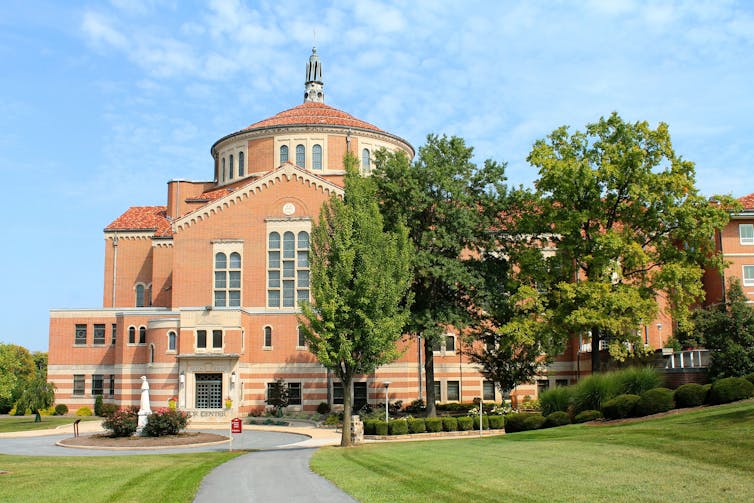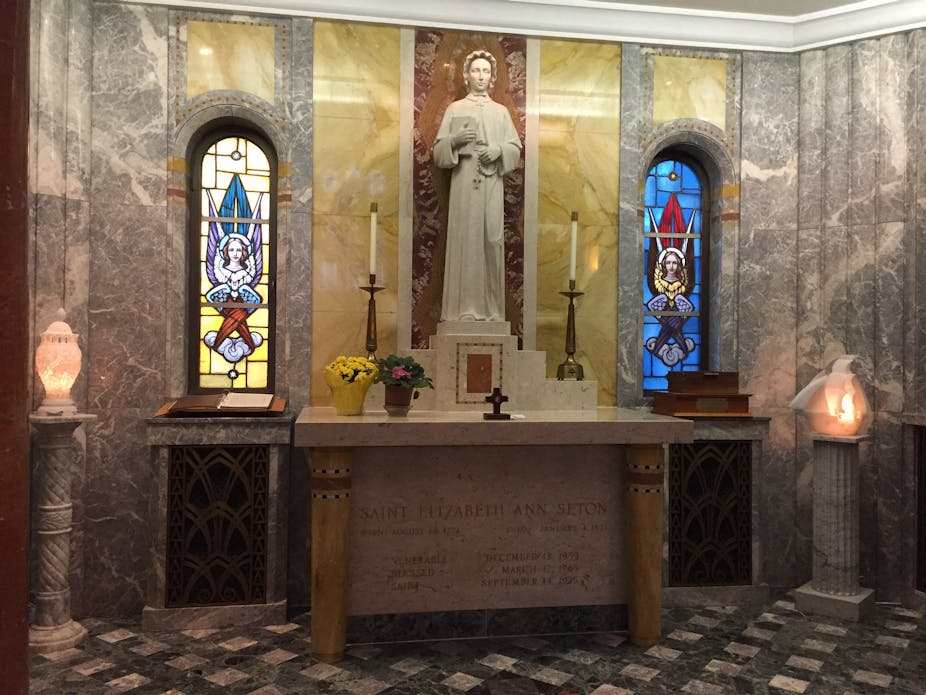The month of January marks the feast of Saint Elizabeth Ann Seton. Born in New York City in 1774, Seton became the first person born in what would soon become the United States to be canonized as a saint in the Roman Catholic Church. Since then, she has been celebrated as an “American saint.”
As the author of her recent biography, I believe Seton’s life and legacy transcend national boundaries. Seton drew inspiration from other cultures, and the religious community she created continues to serve and learn from immigrants.
Early years
When the American Revolution began, Seton’s family, like many other colonists, remained loyal to the Crown. After the war she witnessed the difficulties that defeated Loyalists faced.
As she grew to womanhood in New York City, Seton educated herself through an intellectual and social world that went beyond national boundaries. She was fascinated by French philosophy and English theology.
She married a transatlantic merchant, William Seton, son of an English immigrant, who had lived in Italy. The Setons socialized with other cosmopolitan merchant families, some of them immigrants.
If there was anything distinctly American about Seton’s experience of religion, it was that she saw around her many different faiths practiced openly. An Episcopalian by birth, she loved the Methodist hymns she overheard on Manhattan’s streets. She also admired the plain bonnets of Quaker women – “pretty hats,” as she called them – that they wore to demonstrate their humility.
New Yorkers worshiped in any number of ways, and Seton believed they all had value.
Converting to Catholicism
Seton’s discovery of Catholicism emerged from her willingness to appreciate, as she once wrote, “many different customs and manners.” A chance visit to Italy introduced her to the faith that would transform her life.
In 1804, William Seton’s health and business failed. The Setons traveled to Italy, hoping that the climate would cure William’s tuberculosis and that Italian merchant friends would resuscitate his business. William died, bankrupt, weeks after their arrival.
In Italy, Elizabeth visited Catholic churches, moved by the same interest in other faiths that characterized her New York life. She was first dazzled by the beauties of Florence, and then moved by the Catholic doctrine of transubstantiation, a belief that God was present during the sacrament of communion.
Back home in New York, Seton wavered in the face of her friends’ and family’s mistrust of a faith they did not consider appropriate for the United States. Among Protestant Americans, anti-Catholic attitudes were deeply rooted. Many believed Catholics were loyal only to Rome and untrustworthy.
After an agonizing deliberation, Seton formally converted. But weary of her family’s distaste for her new faith, she hoped to emigrate to Quebec, home to French-speaking Catholics and many churches. She hoped to find in Quebec a unified, Catholic society.
Founding a new community
Emigration proved impractical, and Seton instead moved to Maryland. Over the next 15 years, she developed a new understanding of how to live a faithful life in a diverse nation. Her beliefs did not change, but while earlier she had tried to persuade relatives to convert, she no longer did so.

In Maryland, Seton founded the American Sisters of Charity, an apostolic women’s religious community. The Sisters of Charity began orphanages and schools in Philadelphia, New York and beyond. Many of those cared for were newcomers to the United States or their children. The sisters were laying the groundwork for a Church that drew strength from immigrants in American cities and towns.
Seton also founded a school for girls. She insisted that non-Catholic children be welcome, and that they not be pressed to change their beliefs.
Seton was canonized in 1975. Pope Paul VI declared she had performed posthumous miracles, led a holy life and entered heaven. There are now 11 men and women who have been canonized for their work in the United States or colonies that would become part of the United States.
Some of those who advocated Seton’s canonization emphasized her status as a native-born citizen. The reason lies not in Seton’s life but in the later history of Catholicism.
In the decades after Seton’s death in 1821, large numbers of Irish and German Catholics immigrated to the United States. The cultural antipathy and economic competition that resulted revived anti-Catholic sentiments that had begun to recede.
The heavily immigrant Church was often anxious in the face of anti-Catholicism. Seton’s canonization was meant to be the ringing affirmative answer to the question of whether one could be both a good American and a good Catholic.
Seton’s legacy

Today, the religious communities Seton inspired, the Sisters and Daughters of Charity, honor her as an American and a faithful Catholic. Yet they interpret Seton’s legacy as a commitment to human community that extends beyond national boundaries.
Members of the Sisters of Charity Federation aid immigrants in a variety of ways, including working with the legal system and offering homes to refugee families.
The Federation works with the United Nations to “give voice to those living in poverty,” and has joined other religious communities in a statement on behalf of “our Muslim brothers and sisters.”
With issues about stopping immigrants from entering the United States looming large, it is worthwhile to remember Elizabeth Seton belonged to many communities during her life – the nation was just one of them.

